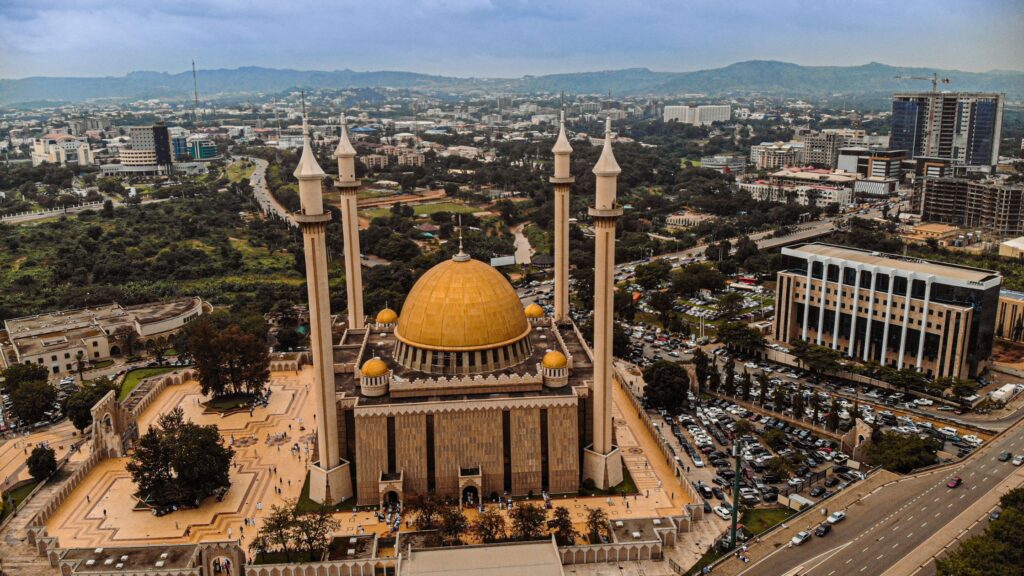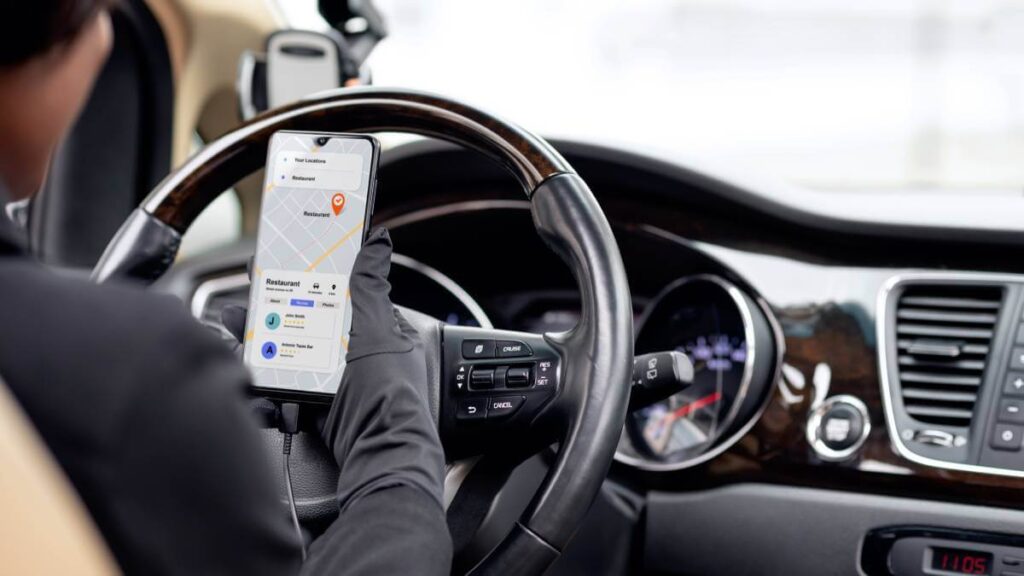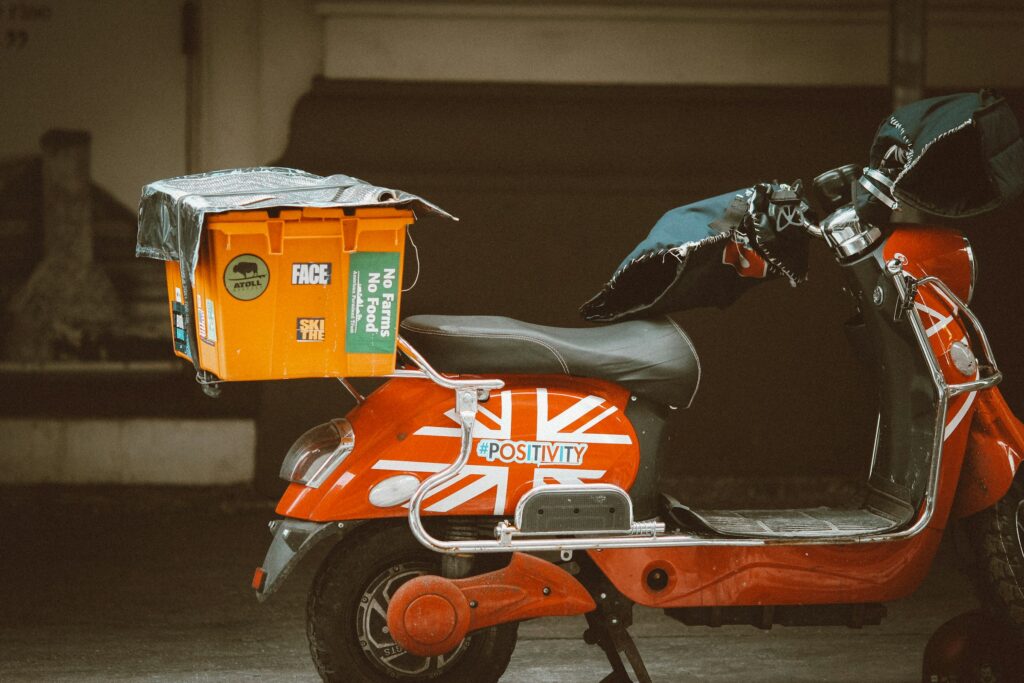For millions of Nigerians who grew up in the 80s, 90s and early 2000s, Mr. Biggs was the uncontested champion of Nigerian fast food. Its fried rice, meat pies and other pastries served in air-conditioned halls, were the best a generation of middle-class Nigerians had.
Its restaurants served as the perfect meeting place for lovers, families and business professionals seeking comfortable locations for meetings outside the office. More than 40 Nigerian cities were home to at least one Mr. Biggs restaurant.
But today, its iconic logo has become a rare sight. The buildings that once hosted it have been either abandoned, dilapidated or taken over by other businesses. It’s battling out failed agreements with its former partners in courts all over the country. The empire that once dominated Nigeria’s quick-service restaurant landscape has been largely forgotten.

Here’s what really happened with Mr. Biggs.
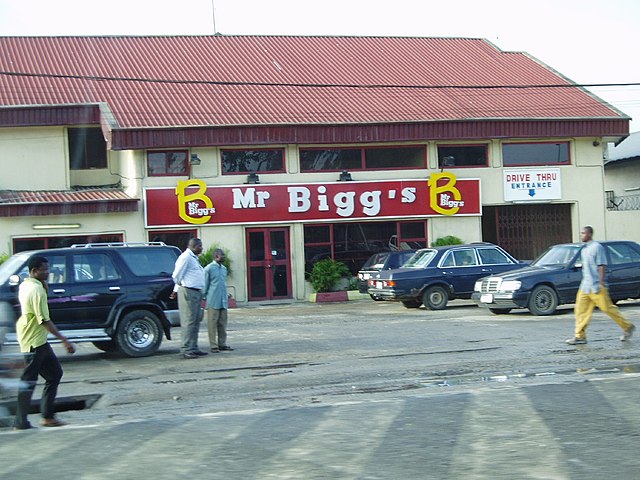
It Started in Kingsway Stores
The story of Mr. Biggs begins not with fast food, but with shopping. In 1948, the United African Company (UAC) of Nigeria Plc, opened a Lagos branch of Kingsway Departmental Stores. Modelled after retail giants, Harrods and Selfridges, the stores sold mostly imported food and clothing. To accommodate weary shoppers, these stores featured in-house coffee shops where customers could rest and enjoy a light snack.
By 1973, these modest coffee corners for shoppers had grown into “Kingsway Rendezvous,” with expanded menus that included sandwiches, pastries and pies. Then came 1986 and Kingsway Stores was gone, booted out by import controls as part of reforms in response to the oil price crash of 1982. UAC transformed Kingsway Rendezvous into a full-fledged fast-food chain under the name we all came to love: Mr. Biggs. With a large working class populace, Marina welcomed the first branch of the chain.
The timing was perfect. Nigeria had a growing middle class that was developing a taste for Western-style dining experiences. It started off with only a limited menu of pastries such as beef, chicken and apple pies, sausage rolls, doughnuts and beef burgers. And would grow to offer these Western fast food staples alongside beloved local dishes.
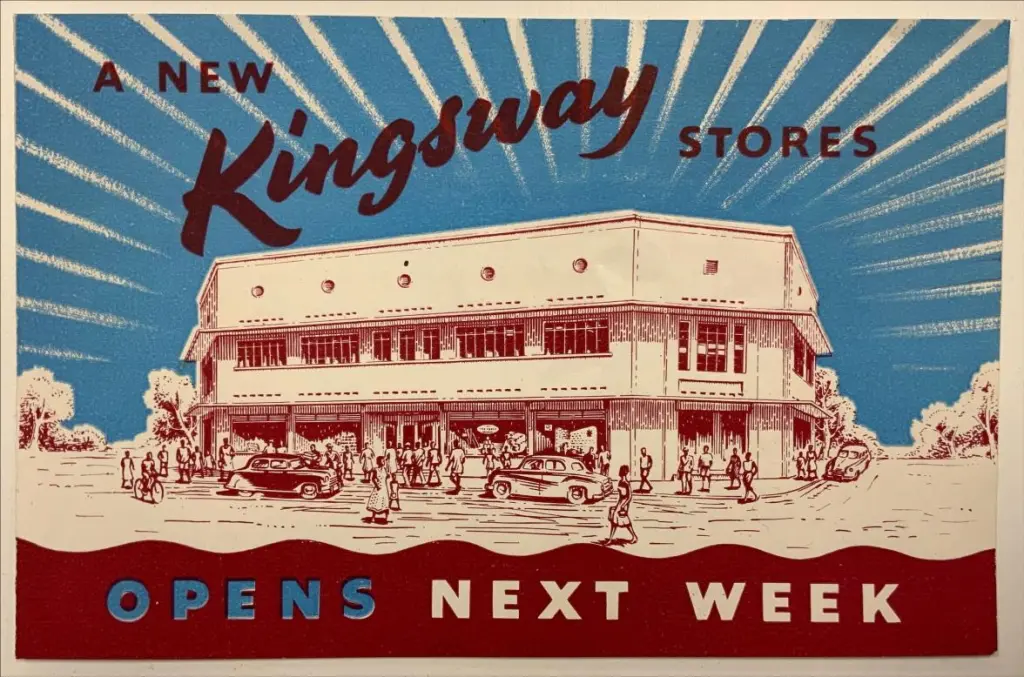
The Golden Years: When Biggs Was Truly Big
Through the late 80s and into the 2000s, Mr. Biggs grew and expanded rapidly to become Nigeria’s dominant quick-service restaurant chain. At its peak, the company boasted over 170 locations across more than 40 cities in Nigeria, even expanding into neighbouring Ghana. The iconic yellow and red logo became one of Nigeria’s most recognizable brands.
What made Mr. Biggs truly special was its family-friendly approach. The company’s primary target market were families, children and young adults. Long before the concept was commonplace in Nigeria, Mr. Biggs restaurants featured play areas where children could frolic while their parents ordered food. This was a product of intense research into Nigerian consumer preferences ahead of launch. The chain even employed a cheerful mascot that appeared at restaurants and during special events to delight young customers and create lifelong brand loyalty.
Birthday parties at Mr. Biggs were the pinnacle of childhood social status. The restaurant’s “Double Delight” and “Triple Delight” birthday cakes, which featured combinations of vanilla, chocolate and strawberry flavours, became legendary treats that Nigerian children dreamed about. A Mr. Biggs visit was enough bribe to get a child to behave properly. There was also an array of promotional activities that targeted children: Valentine’s Day specials, Easter splash, Children’s day fun time, back to school bonanza and Yuletide specials.
Mr. Biggs also offered blessed reliable convenience for travellers too. Whether you needed a clean restroom during a long journey or a familiar meal in an unfamiliar city, the chain’s widespread presence meant that comfort was never too far away. Early Nollywood movies would immortalize Mr. Biggs as the quintessential lovers’ date spot. Think back to those scenes where Desmond Elliott is professing his love to Genevieve Nnaji over ice cream in the familiar red and yellow setting that signified modern Nigerian romance.

The Cracks Begin to Show
The cracks began to appear as the new millennium progressed. The franchise model that had fuelled its explosive growth would ultimately contribute to its decline.
In 2002, UAC had adopted an ambitious franchising model that was modelled after those of global giants like McDonald’s and Burger King. While initially the company kept tight control with only about 10 percent of locations operated by local franchisees and the rest managed by UAC, this ratio eventually shifted. This allowed the company to grow at breath-neck pace. But as more independent operators received licenses to run Mr. Biggs restaurants, maintaining consistent quality across the board became increasingly difficult.
Some of the franchisees were motivated purely by profit margins, which made sense considering the cost of acquiring the franchise, and they consequently began cutting corners. The standardized experience that had been Mr. Biggs’ hallmark started to vary wildly from location to location. At some outlets, the once-celebrated meat pie became “air pie” for its conspicuous lack of beef filling. The jollof rice that previously a reliable comfort food, came under severe criticism as tasteless in many branches. UAC would even let go some of its franchisees.
There was also the usual bedevilling challenges that come with running a restaurant business in Nigeria, including unreliable power supply, exorbitant electricity bills, supply chain disruptions, multiple government levies and employee theft. All these began to overwhelm many of Mr. Biggs’ franchisees. Some closed their locations entirely, while others converted them to different restaurant concepts.
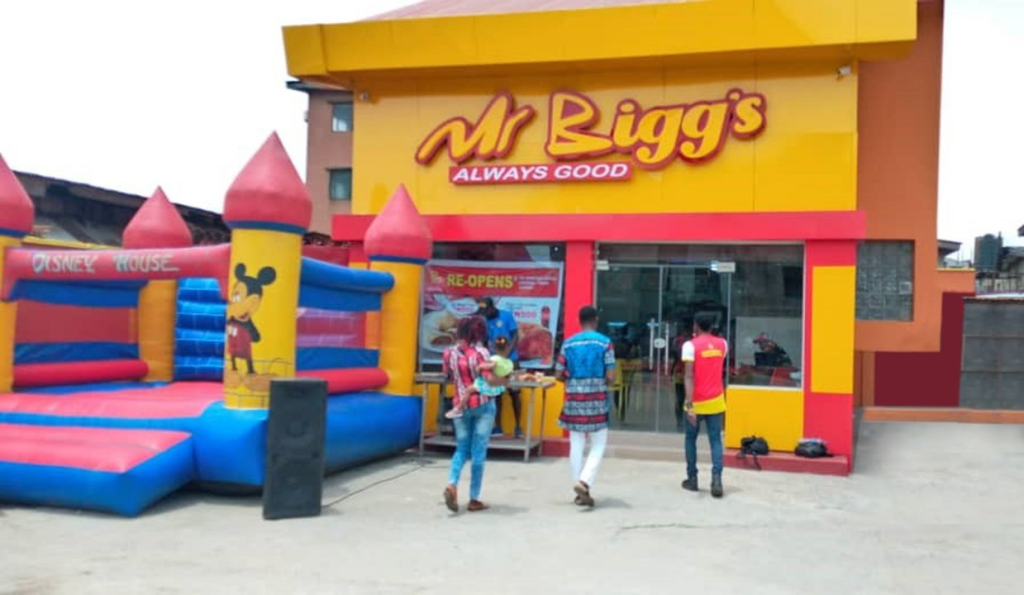
Competitors Squeeze Into the Market
As Mr. Biggs struggled with its internal problems, newcomers squeezed into the market. The company was evidence that a quick-service restaurant market in Nigeria was not only viable but profitable and naturally, competitors rushed in to claim their own share.
Sweet Sensation and Tastee Fried Chicken arrived in the 1990s, followed quickly by Tantalizers, which arrived in 1997. Although none of them would match Mr. Biggs’ peak presence, collectively, however, they began to erode its market dominance. Then came Chicken Republic in 2004, with its rapid expansion strategy that was reminiscent of Mr. Biggs at its peak. By staying affordable even amid Nigeria’s challenging economic climate, Chicken Republic captured the hearts and wallets of many former Mr. Biggs loyalists.
The final blow came when international heavyweights like KFC and Domino’s Pizza squeezed into the Nigerian market in the early 2010s. These global chains brought decades of expertise in branding, marketing and menu innovation. Their sleek, modern restaurants, aggressive marketing campaigns and constant menu innovations particularly appealed to a generation of younger Nigerians who had no nostalgic attachment to Mr. Biggs.

Failed Attempt at Regaining Momentum
As a way of showing up to the fight, around 2012, Mr Biggs adopted a new logo that was severely criticised. Many loyal customers were critical of the decision to abandon the iconic original design. Aside that, the change did not help its cause. Recognizing the threat to its existence, UAC sought help oversea. In 2013, South Africa’s Famous Brands acquired a 49% stake in UAC Restaurants, Mr. Biggs’ parent company. Famous Brands brought considerable experience from its experience successfully managing South African and international chains like Wimpy, Steers and Debonairs Pizza.
The partnership seemed promising, at least, on paper. Famous Brands would provide expertise in “managing intellectual property, growing brands and optimizing supply chain operations.” On its own part, UAC would contribute its knowledge of the Nigerian market. Together, they would revitalize the struggling icon. But despite these efforts, Mr. Biggs continued its death spiral. By 2015, its number of locations had decreased to 153, down from 171 just a year earlier. By 2023, fewer than 60 Mr. Biggs restaurants remained across Nigeria.
In July 2019, the brand attempted yet another reinvention with a new model restaurant in Victoria Garden City, Lagos. This location featured a contemporary design, a kid’s play area and even housed fellow UAC restaurant’s Debonairs Pizza. The company also established express kiosks at strategic points throughout Lagos to target pedestrian traffic, mimicking successful strategies from competitors like Chicken Republic. More recently, Mr. Biggs has expanded its menu to include trendy Nigerian dishes like Asun and Ofada rice with sauce, alongside affordable “Chop Up” meal deals.
Still, none of these has helped arrest its decline.
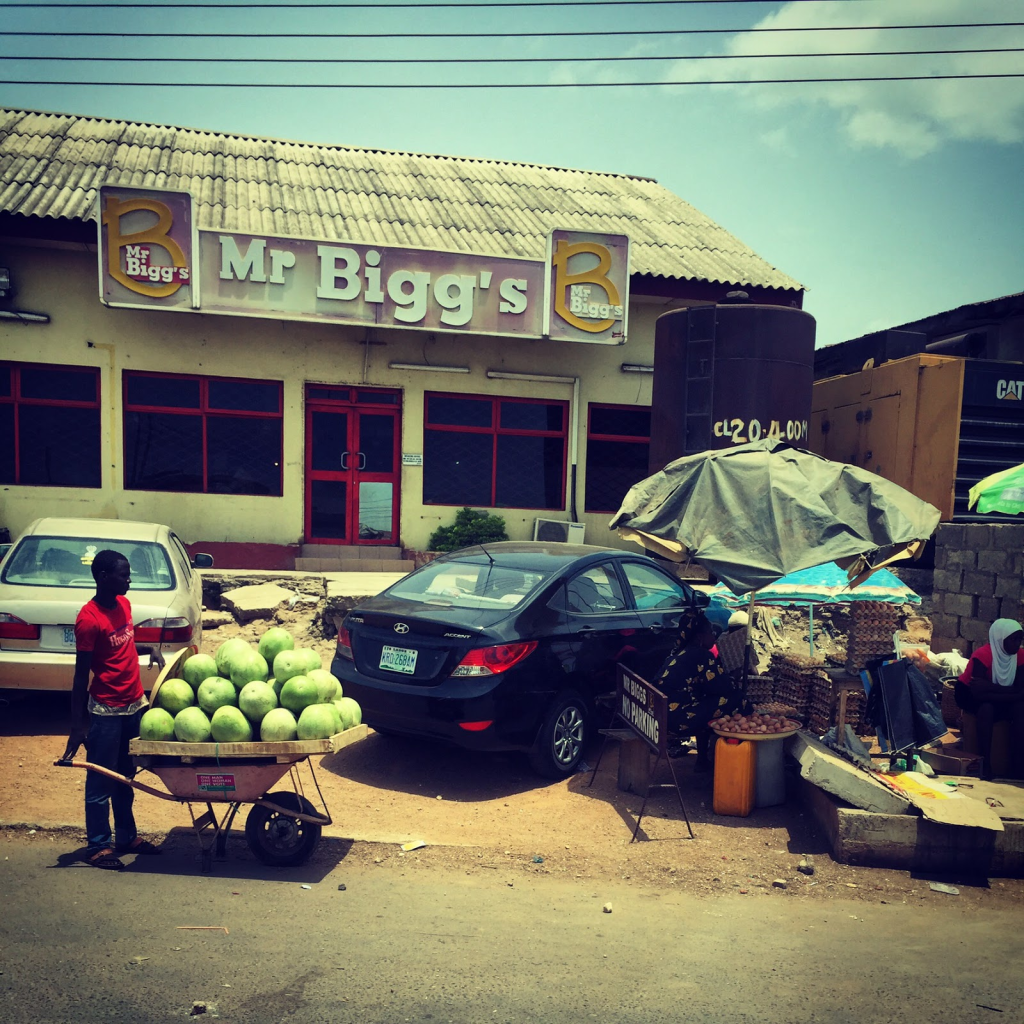
The Lesson in Mr. Biggs’ Story
To be sure, the brand still operates and even thrives in certain locations like Kaduna, but it will likely never return to its former glory. For Nigerians of a certain age, Mr. Biggs exists now primarily as a shared memory of birthday parties, family outings and meat pies that were once the gold standard. Some have argued that our collective memory has enhanced the quality of those experiences through rose-coloured retrospection. It’s difficult to argue against this. Perhaps the only reason Mr. Biggs seems greater in memory was because, for many years, it was the best we ever had. All that has changed now.






